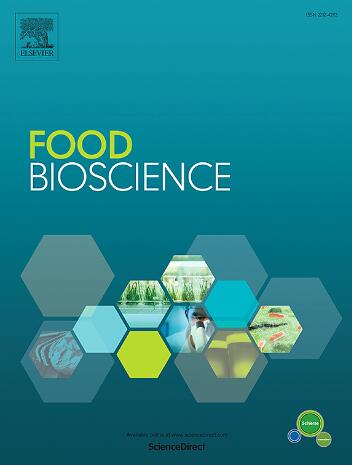Unravelling the physicochemical and antioxidant profiles of guava genotypes across developmental stages and seasonality
IF 5.9
1区 农林科学
Q1 FOOD SCIENCE & TECHNOLOGY
引用次数: 0
Abstract
Guava is a highly nutritious pantropical fruit valued for its rich medicinal and economic significance. Despite its economic and nutritional importance, limited studies exist on the influence of pulp colour and seasonal variations on the physicochemical and antioxidant profiles of guava fruits. Addressing this gap, the present study evaluated 31 guava genotypes with red/pink and white pulp color at 70, 96 and 110 days after anthesis across rainy and winter seasons to identify superior genotypes for breeding and commercial purposes. Key findings revealed that physicochemical parameters were peaked at the ripe stage, particularly in winter. Fruit shape ranged from rounded to broadly round and conical, while pulp and peel color transitioned with maturity. At ripe stage of winter season fruit traits like weight (237.08g), length (74.5 mm) and width (71.62 mm) increased progressively, with genotype GH-2016-1B exhibiting the highest values. Regarding antioxidant profiles, hybrid Pusa Aarushi showed the highest levels of ascorbic acid (155.36 mg/100g of FW), total phenolic content (292.50 mg GAE/100 g FW), total antioxidant activity (10.17 μM TE/g FW), total carotenoids (0.88 mg/g) and lycopene content (30.11 μg/g) at the ripe stage during the winter. Concurrently, hybrid Pusa Pratiksha excelled in phenolic (233.50 mg GAE/100 g FW) and protein content (48.28 mg/mL), while GH-2016-8F (7.84 %) recorded the highest total sugar levels, showcasing significant seasonal influences. Besides these results, correlation and principal component analysis also underscores the influence of seasonal factors with developmental stages on guava quality, offering valuable insights for breeding programs and harvesting time to maximize nutritional and functional benefits.
揭示番石榴基因型在发育阶段和季节性的理化和抗氧化特征
番石榴是一种营养丰富的泛热带水果,因其丰富的药用和经济价值而受到重视。尽管番石榴具有重要的经济和营养价值,但关于果肉颜色和季节变化对番石榴果实理化和抗氧化特性的影响的研究有限。为了解决这一差距,本研究在雨季和冬季对开花后70、96和110天果肉颜色分别为红色/粉红色和白色的31种番石榴基因型进行了评估,以确定适合育种和商业用途的优良基因型。主要发现表明,物化参数在成熟期达到峰值,特别是在冬季。果实形状从圆形到宽圆形和圆锥形,果肉和果皮颜色随着成熟而转变。在冬熟阶段,果实重(237.08g)、长(74.5 mm)和宽(71.62 mm)等性状逐渐增加,以基因型GH-2016-1B最高。在抗氧化特性方面,杂种普沙阿鲁希在冬季成熟期抗坏血酸(155.36 mg/100g FW)、总酚含量(292.50 mg GAE/ 100g FW)、总抗氧化活性(10.17 μM TE/g FW)、总类胡萝卜素(0.88 mg/g)和番茄红素含量(30.11 μg/g)均达到最高水平。与此同时,杂交品种Pusa Pratiksha在酚类物质(233.50 mg GAE/100 g FW)和蛋白质含量(48.28 mg/mL)方面表现出色,而GH-2016-8F(7.84%)的总糖含量最高,表现出明显的季节影响。除此之外,相关分析和主成分分析还强调了与发育阶段相关的季节因素对番石榴品质的影响,为育种计划和收获时间提供了有价值的见解,以最大限度地提高营养和功能效益。
本文章由计算机程序翻译,如有差异,请以英文原文为准。
求助全文
约1分钟内获得全文
求助全文
来源期刊

Food Bioscience
Biochemistry, Genetics and Molecular Biology-Biochemistry
CiteScore
6.40
自引率
5.80%
发文量
671
审稿时长
27 days
期刊介绍:
Food Bioscience is a peer-reviewed journal that aims to provide a forum for recent developments in the field of bio-related food research. The journal focuses on both fundamental and applied research worldwide, with special attention to ethnic and cultural aspects of food bioresearch.
 求助内容:
求助内容: 应助结果提醒方式:
应助结果提醒方式:


